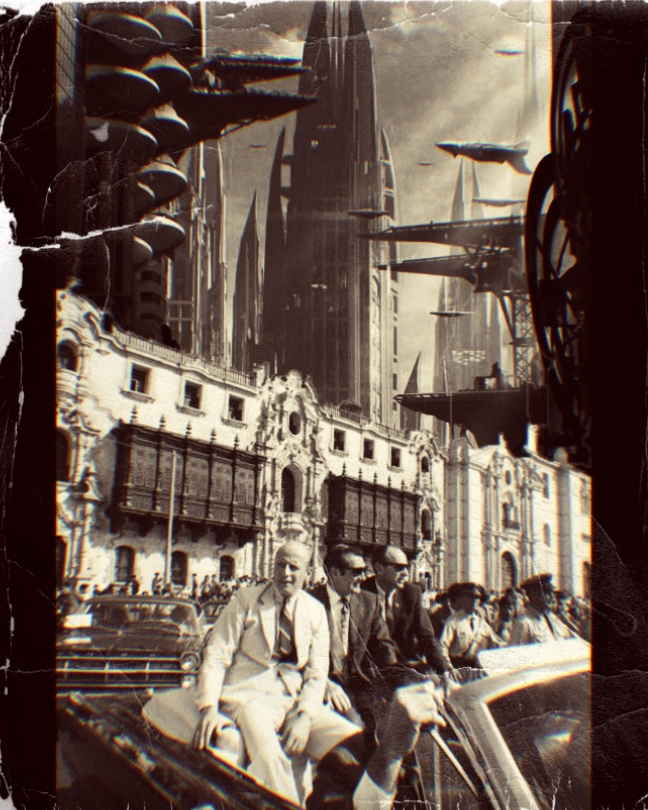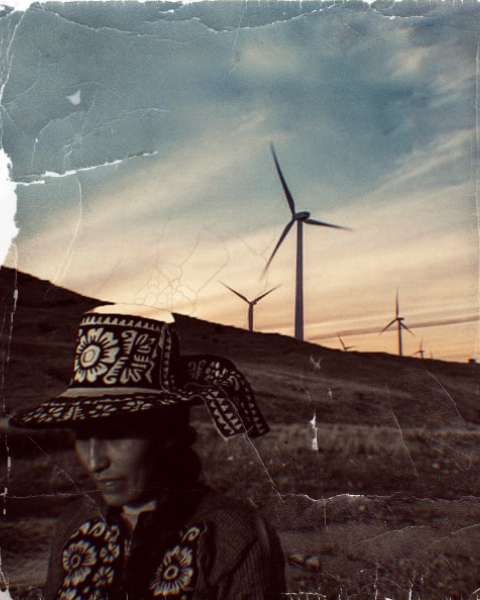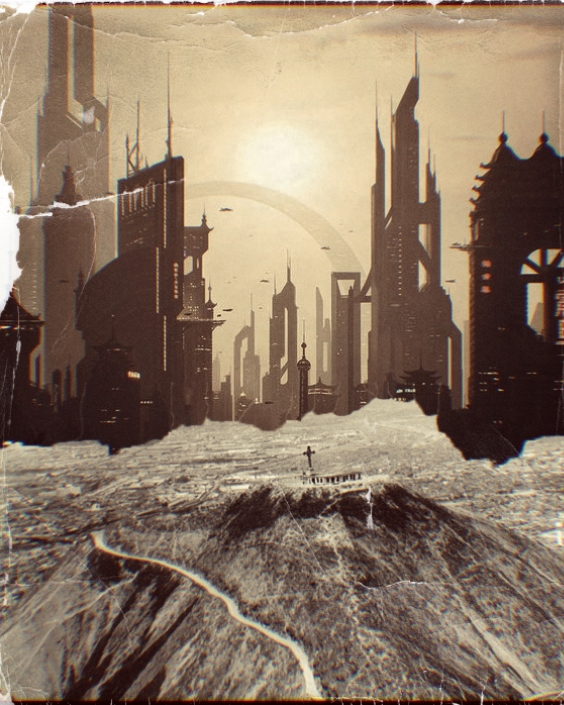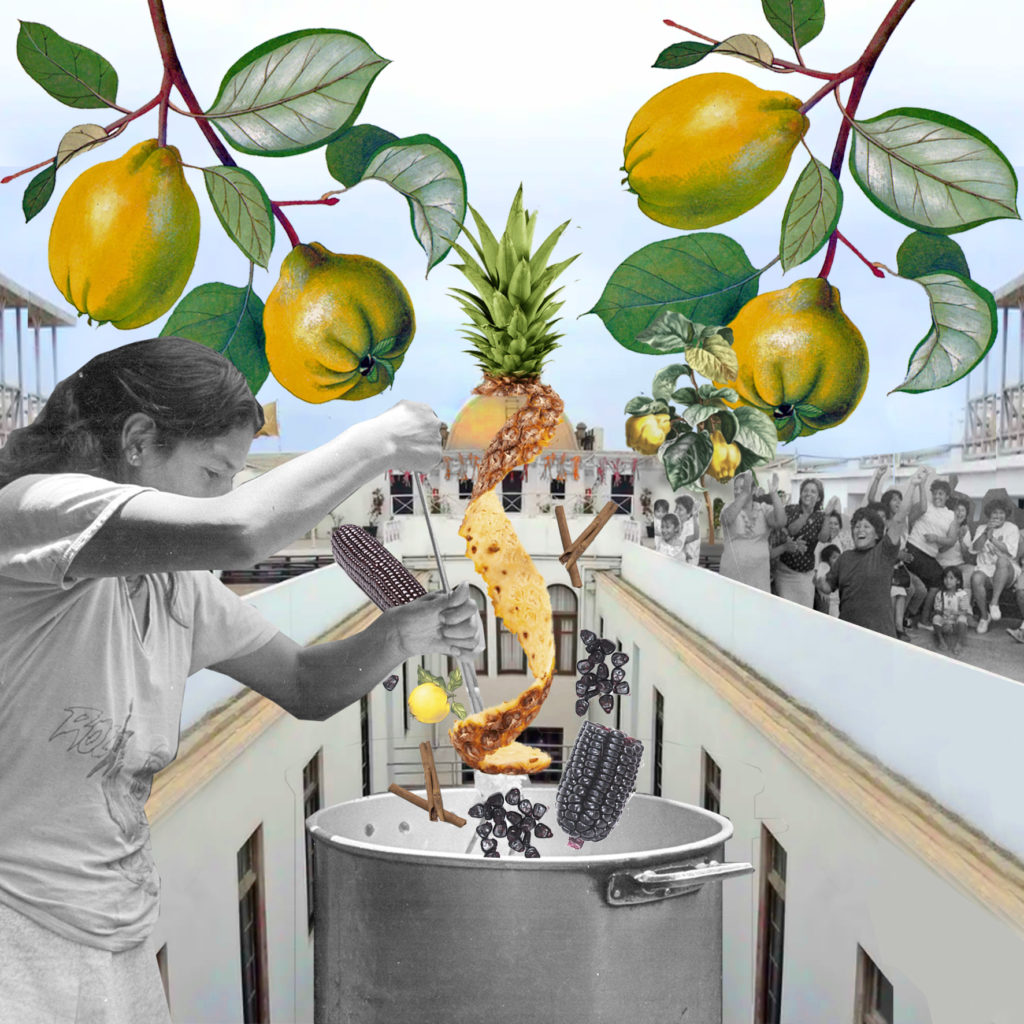*View the interactive works in the virtual gallery (you must use the Firefox browser).
Immutable by Andrea Vera
One of the profound problems with serious implications for Peru is inequality, which is principally expressed economically, but also through social issues, such as gender and ethnicity; many experience a limitation to their rights: the right to decent employment, sufficient income, adequate food, and safe housing for themselves and their families. This problem started with the conquest of our territory, and it is possible it may continue for generations to come for Peruvians. My project uses collage and digital intervention to envision two different scenarios: a Peru from 1900-1980 and an imagined future Peru full of speculative technology, where you can see that the inequality still exists and endures.
——————————

The Eye of Yesterday by Jacqueline Montenegro
Today, we guard ourselves against an invisible virus by using and disposing of many implements. Humans are focusing on the disaster of the present without thinking about the damage we are doing to our future. Time will pass and we will suffer the consequences.
The concept of the sculpture is to show the result of the actions that we take today, and how they will impact our ecosystem. I encourage the public to stand in the middle of the sculpture, where they can see the beauty of nature; behind them, the ocean is located — the ocean where we are throwing away our waste. I imagine the location of the sculpture to be in Barranco, next to the ocean, which we currently view as a “clean” place. However, will it continue to be this way? That will depend on us.
——————————
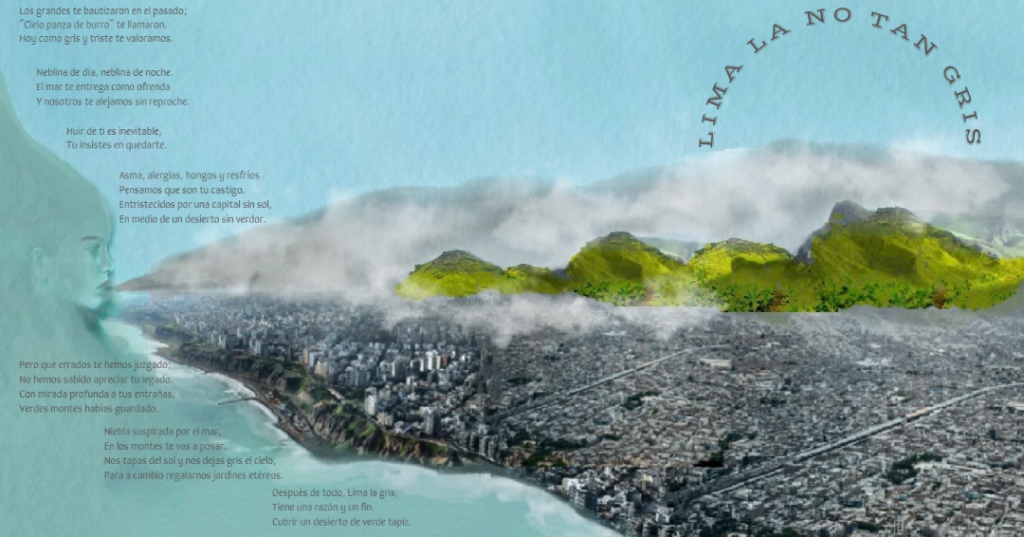
Lima, The Not-So-Gray by Josefina Solis
The objective of this project is to change the traditional view of the people of Lima about our city. I’m looking to do this through an aerial image of a modified Lima, concentrating on the sea, the fog and the ecosystem of Lomas located on the outskirts. To present a complete image of the territory, I would like to expand the vision of Lima as gray and show that this gray has a very special reason for being: the Lomas Costera. This seasonal ecosystem is unique to Peru and Chile. I would like for us to learn to value it as something that makes it special to our city. Also, for people to become aware of how valuable it is to have this green space within a desert. This is possible thanks to the gray mist which we are not very friendly with. I present my idea through an image accompanied by a poem.
——————————
Our Lima by Leonardo Rodas
Often, the vision of Lima is that of a city that has undergone disorganized, chaotic growth which seems to correspond to no one that inhabits it. A sprawling city, with no one to guide its development.
However, the faces shown of the city are limited. What is Lima beyond these limited representations?
The purpose of this project is to recreate numerous maps of the city in which we can observe different perspectives of what “Lima” is and what being a “Limeño” means.
Through these perspectives, represented by graphic layers, we start building out the current vision of this city. In other words, to reflect on how it is we negotiate this vision.
——————————
Feed by Lucero Jacobo Guerrero
Feed” is a reflective work on the recovery of people’s power over themselves (individually and as a community) using food as a representation of what gives us life.
In the midst of a health crisis, Peruvians have felt desolate, isolated and powerless. In a country that for the last decade has been characterized by being multicultural and gastronomic, food went from being our refuge and pride to being a risk.
Going out to buy the basics in order to eat became dangerous, and many could not even go out shopping for lack of money. The phrase “either we starve or we die from the virus” perfectly sums up the situation of the average Peruvian today.
“Feed” seeks to highlight two things: First, that self-sustainability is possible. We can regain the power that has been taken from us over something so essential as food by managing it ourselves. And second: the importance of mutual support and sustainable community living to cope with a crisis.
——————————
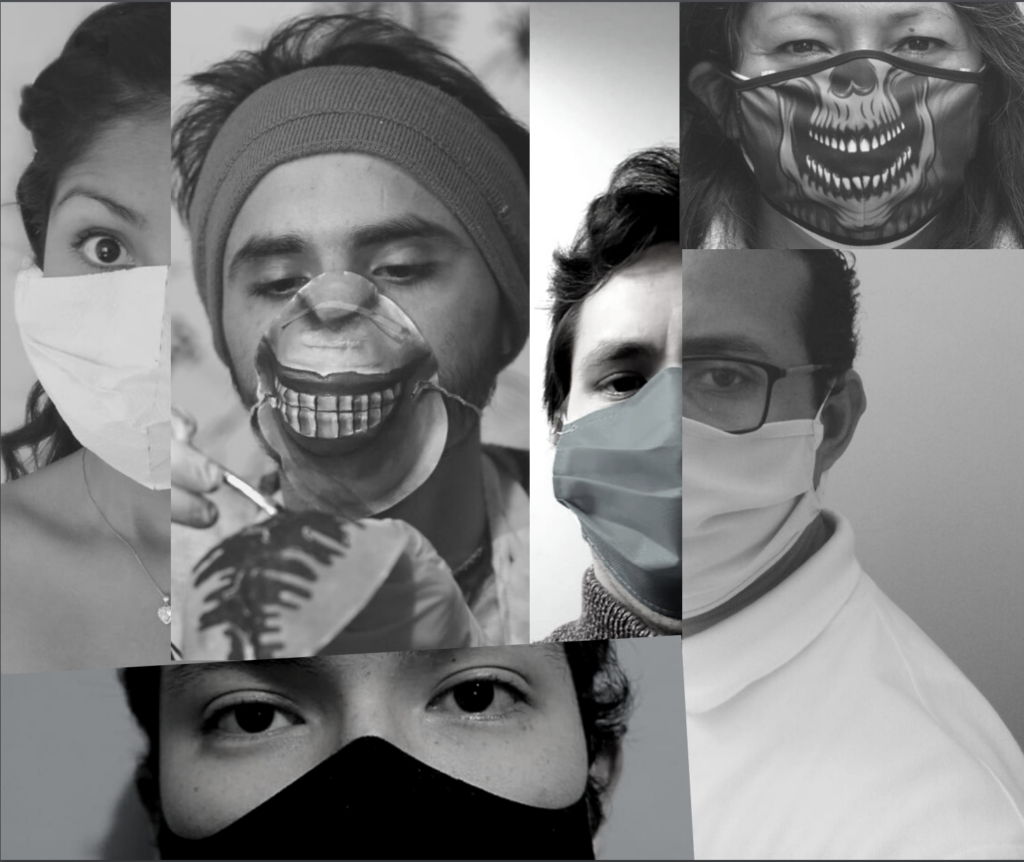
What Are You Protecting Yourself From? by Filiberto Cueva Yomona
As a result of the COVID-19 pandemic, we see thousands of people in the world using masks as their main method of protection, both to avoid catching the virus and to avoid infecting other people.
On the Internet, you can find a variety of articles that talk about masks: instructions on how to use them, where to buy them, and even what fabric to use to create masks without leaving your home. However, what are you really protecting yourself against by putting on a mask? From COVID-19? Or also from the chaos and bureaucracies of your government, the indifference of your neighbors, your own loneliness living in isolation? Or perhaps, you’re protecting yourself from your fears, traumas and fears…
